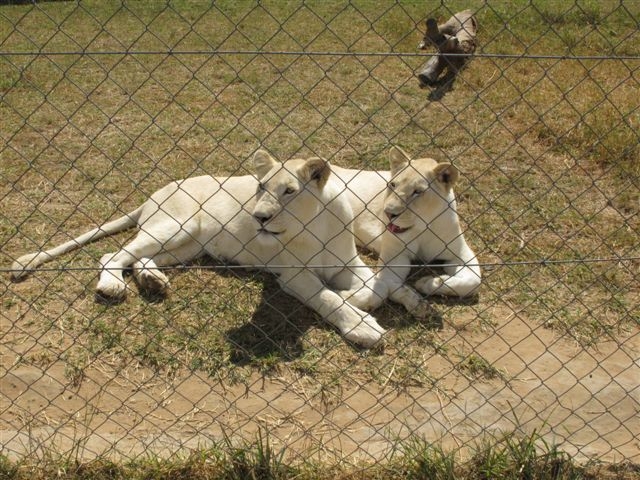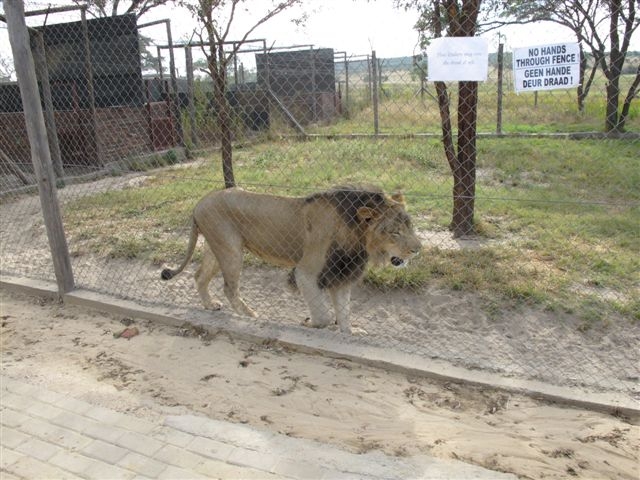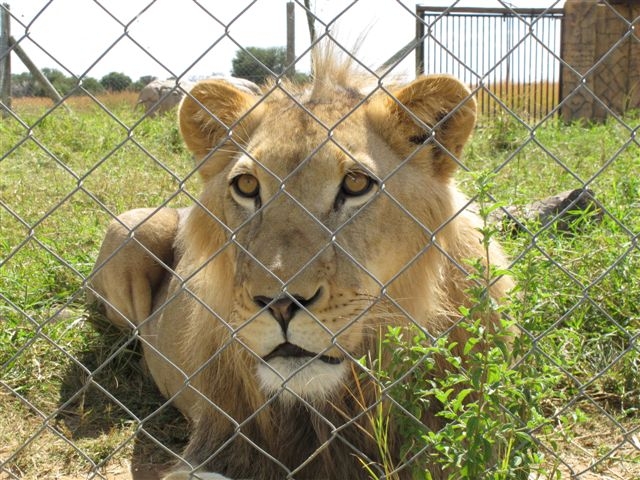The Endangered Wildlife Trust (EWT) is growing increasingly concerned about the proliferation of captive facilities holding a range of carnivores in South Africa for the sole purpose of tourism and financial gain. We urge the public to consider a few facts when visiting any of these facilities that hold lions, cheetahs, leopards, wild dogs, hyenas and even some exotic (non-native to South Africa) species such as tigers and panthers.

No captive carnivore facility is breeding carnivores for release into the wild, despite what they may claim. Captive carnivores do not contribute to the conservation of free-roaming populations; they are not releasable and do not form part of any registered conservation or management plan for any carnivore in Africa.
In many carnivore facilities, petting and bottle feeding of cubs are offered for a fee. These cubs are often taken away from their mothers to stimulate faster reproduction and provide a constant supply of petting carnivores. Visitors pay to pet the animal and have their photograph taken with it and their slightly older tame carnivore siblings.
These carnivores become human-imprinted; they do not grow up in a natural social group, making it impossible to release them into a natural habitat for the long term. This, coupled with the disease risk posed by captive-bred animals, as well as their potentially dubious genetic lineage, renders them a risk for release to not only themselves but to other free-roaming carnivores.

Frequently, a ‘paying volunteer’ is exploited for further financial gain, with volunteers being told that the carnivore mothers cannot care for their offspring and that once they are old enough, hand-raised carnivores will be returned to the wild.
“There are approximately 6,000 captive lions in South Africa bred for various economic purposes”, as opposed to approximately 2,300 free-roaming in reserves and parks. [Draft Biodiversity Management Plan (BMP) for Lions, 2015]. The BMP defines captive lions as “lions [that] are bred exclusively to generate money. Managers actively manipulate all vital rates and demographics.”

The EWT’s concern relates to the public’s understanding of the role and the purpose of captive carnivores and these facilities in carnivore conservation, and we urge the public to understand better the role of these facilities as well as the risk that these animals may pose to the public:
– Captive-bred carnivores are always more dangerous than their wild counterparts. They lose their fear of humans and associate humans with food providers. Their social structures are heavily interfered with, and their natural cycles are often manipulated. A wild carnivore will usually steer away from humans, but a captive-bred carnivore may not need such caution.
– A facility breeding carnivores will usually have to sell their offspring; it stands to reason that they cannot always have cubs and youngsters if they do not sell ‘excess’ animals.
– The captive-bred lion hunting industry in South Africa has increased rapidly in recent years, and South Africa is increasingly supplying captive-bred lion bones for export to Asian markets.
– The Department of Environmental Affairs released figures in December 2013 that stated that “South Africa officially issued permits for the export of nearly (if not more than) 1,300 dead lions from South Africa to China, Lao PDR and Viet Nam from 2011 to 2012 inclusive.” BMP, 2015.
– “The so-called ‘canned hunting’ industry for lions has also increased in recent years, and the total value generated from hunting captive lions amounted to about R98 million in 2006/2007.” Lion BMP, 2015.
This raises the question: where do all these lions come from or go to? In South Africa, a thriving canned hunting industry can, in many cases, be linked to an equally thriving industry based on cub petting and commercial captive breeding centres.

Some may argue that there is educational value in allowing people to handle wild animals. However, this kind of education provides the incorrect message that wild animals exist for human entertainment, and that they can be petted like domestic animals. They also do not learn much about the natural behaviour, social structure or role of free-roaming carnivores.
It is important to note that captive breeding is not a conservation recommendation for any carnivore species in South Africa. Carnivores breed extremely well in the right conditions. For almost all our threatened carnivore species, the conservation priorities include reducing human-wildlife conflict, securing suitable habitat, reducing illegal offtake and maintaining balanced, functioning ecosystems. Without these in place, captive breeding leads to an over-supply of non-releasable animals which often end up as trophies. We also question whether any funding generated from captive carnivore breeding supports the conservation of free-roaming carnivores.

The EWT does not allege that any specific facility is breeding carnivores for the lion bone trade or for the practice of ‘canned hunting’, but we do urge the public that visits these facilities to ask at the very least these critical questions:
– What is the plan for the long-term future of the animals in this facility?
– Where are the cubs’ mothers?
– Why are cubs not being raised by their mothers?
– What happens to the facility’s cubs when they grow up?
– If they are released into larger wildlife areas, where ate they located, and can the facility provide documentation to prove a viable, ethical and successful release process?
– If the facility is breeding, do they have a management plan that determines responsible husbandry and management of all stock?
– Do any of the ‘stock’ have the opportunity to live out their natural lives, or are they hunted or bred with again?
– What happens to the facility’s surplus animals?
– Can the public inspect the facility’s record books and follow an individual animal’s life cycle?
– If these animals become part of another breeding programme, for what purpose?

The EWT calls for more active participation from the public in questioning the role of all captive carnivore facilities and the management of the animals in their care. We also call on the tourism sector to recognise the role that they may be playing in supporting some facilities that cannot account for the conservation claims that they make.
To comment on this story: Login (or sign up) to our app here - it's a troll-free safe place 🙂.![]()
HOW TO GET THE MOST OUT OF AFRICA GEOGRAPHIC:
- Travel with us. Travel in Africa is about knowing when and where to go, and with whom. A few weeks too early / late and a few kilometres off course and you could miss the greatest show on Earth. And wouldn’t that be a pity? Browse our ready-made packages or answer a few questions to start planning your dream safari.
- Subscribe to our FREE newsletter / download our FREE app to enjoy the following benefits.
- Plan your safaris in remote parks protected by African Parks via our sister company https://ukuri.travel/ - safari camps for responsible travellers






